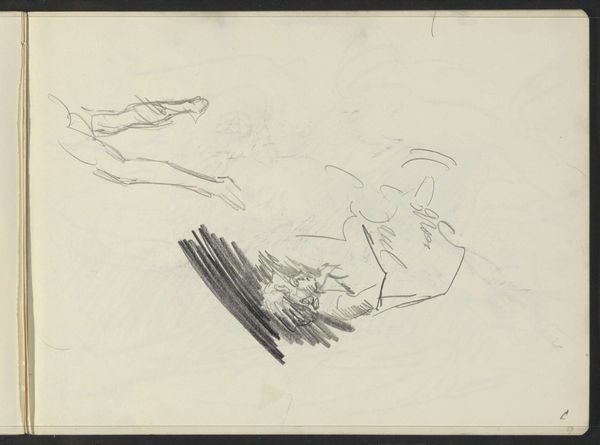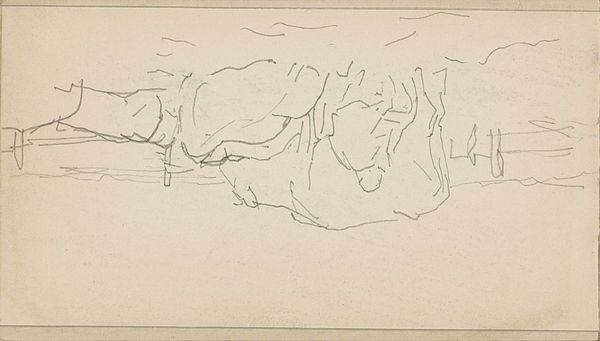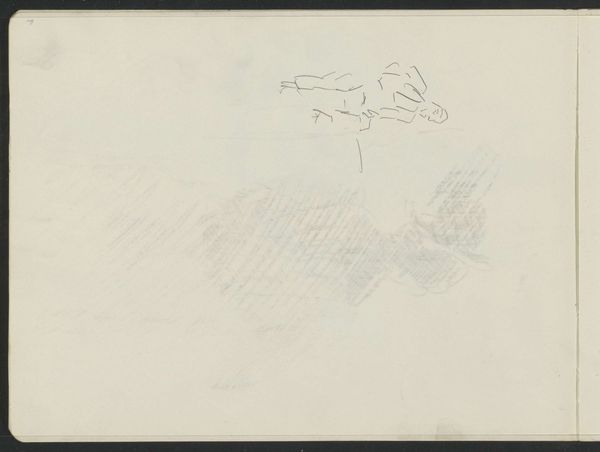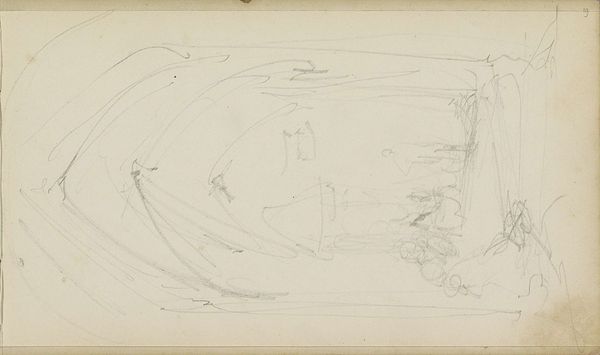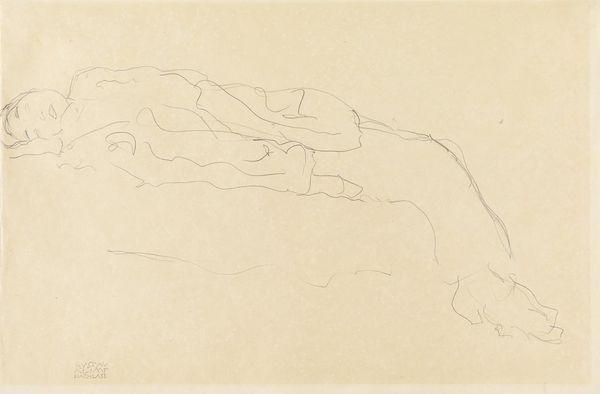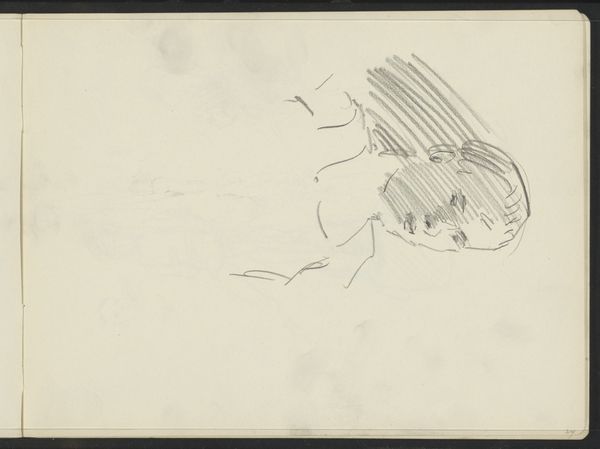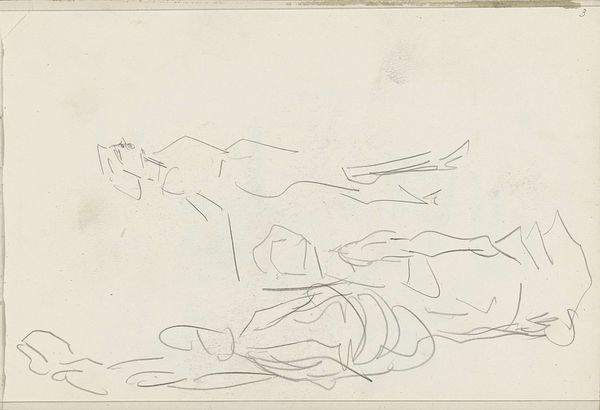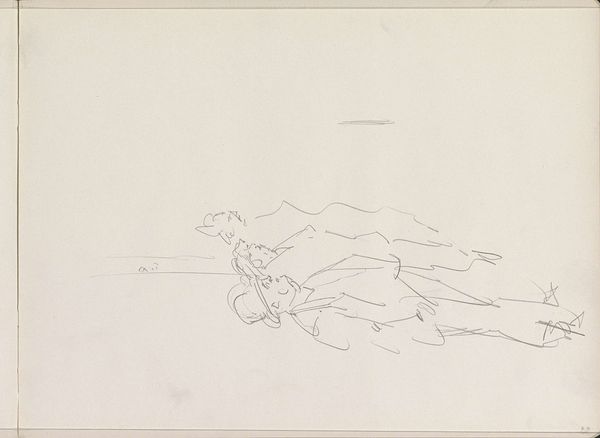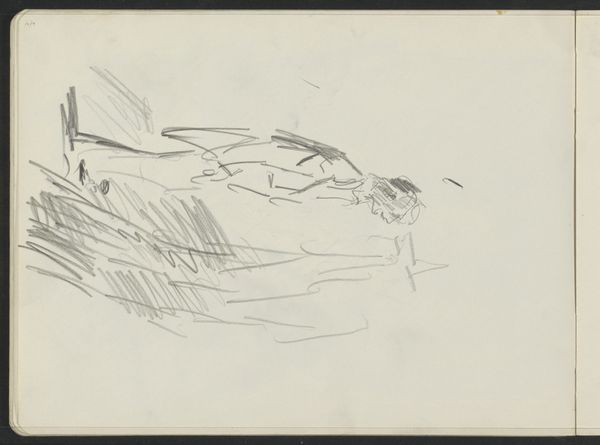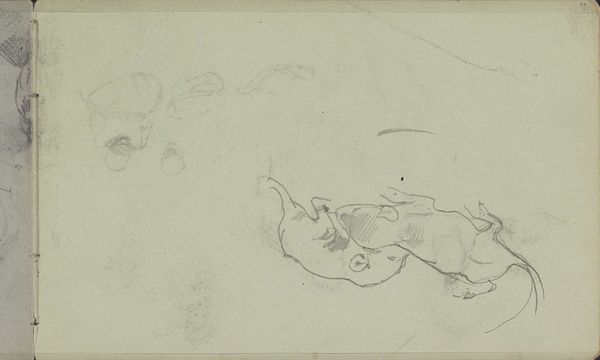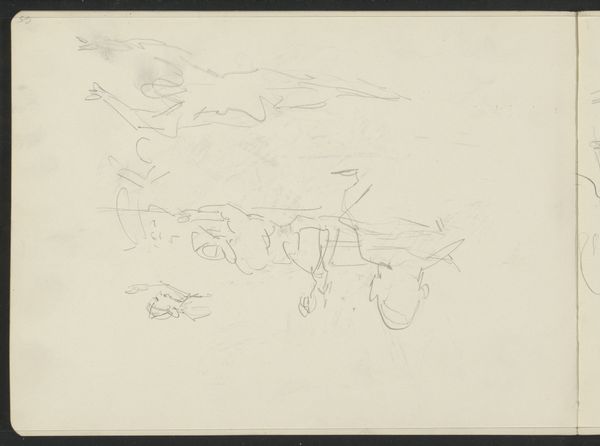
Copyright: Rijks Museum: Open Domain
Curator: Welcome. We’re standing before “Studie, mogelijk van een landschap,” or "Study, possibly of a landscape," an ink drawing on paper by Isaac Israels, likely created sometime between 1915 and 1925. Editor: My first impression is a sense of tranquility despite the active, almost frenetic linework. There’s a stillness, a contemplative quality. Curator: Yes, Israels captures movement through economy. Notice the deliberate use of line weight – how thin, almost ethereal strokes suggest distance, while thicker lines delineate form. The composition is primarily horizontal, which reinforces that sensation of repose you mentioned. Editor: And I think this supposed neutrality or formalist play of line also has roots in his specific socio-political positionality. Considering Israels was a Jewish artist working during a period marked by increasing antisemitism and social upheaval, did his landscapes become sites to evade stricter figuration, a refuge? The impressionistic ambiguity, perhaps, protected him and his art from harsh criticism, while also speaking subtly to the precarity of belonging. Curator: An intriguing reading! Certainly, we can situate the work within the cultural milieu of its time, but I’m hesitant to reduce its aesthetic merits to mere social commentary. Look at the tension created by the contrast between the detailed foreground and the hazy background. This interplay engages the eye, and keeps our interest despite the sketch-like nature. Editor: But shouldn't we ask whom the work's aesthetics serve, particularly within broader power structures? Can we claim that aesthetics can exist purely for art’s sake when these definitions so often benefit dominant classes, races, and genders? Even this ambiguity is saying something! It creates this liminal space, like Israels himself was living between worlds, always at the shoreline, observing. Curator: I agree context is key. However, to focus solely on that can overshadow Israels’ masterful technique. I believe the drawing's strength lies in its formal properties – the way the artist manipulates line and space to create a compelling visual experience, regardless of its potential social interpretations. Editor: I appreciate the dialogue this artwork generates between the personal and the political, and I hope that listeners take with them not only an appreciation of the image’s materiality, but also of the historical moment that fostered its existence. Curator: Absolutely. Whether through formal analysis or social interpretation, it offers an invitation to further engagement and inquiry.
Comments
No comments
Be the first to comment and join the conversation on the ultimate creative platform.
